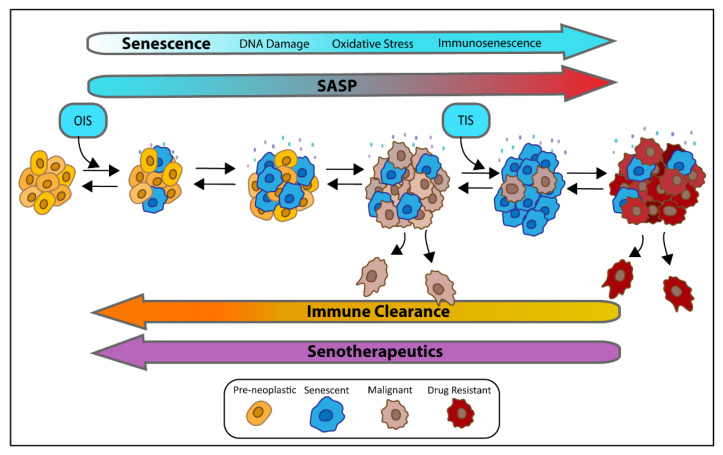Figure 4.
The role of senescent cells in cancer progression and resistance. Pre-neoplastic lesions with BRAFV600E or RAS mutations can acquire senescent cells through oncogenic induced senescence (OSI). The OIS cells can spread senescence to nearby cells through their senescent associated secretory phenotype (SASP). If these senescent cells are not cleared by the immune system, the SASP can produce a pro-inflammatory and pro-tumor microenvironment with increased DNA damage, oxidative stress, and immunosenescence resulting in malignant transformation. Therapy induced senescence (TIS) by BRAFi is initially beneficial in combating malignant melanoma, but can lead to increased senescence, drug resistance, and aggressive, stem-like tumor phenotype. Senotherapeutics can reverse all phases of disease progression by targeting pro-survival pathways, reducing SASPs and/or by aiding the immune system in clearing senescent cells.

